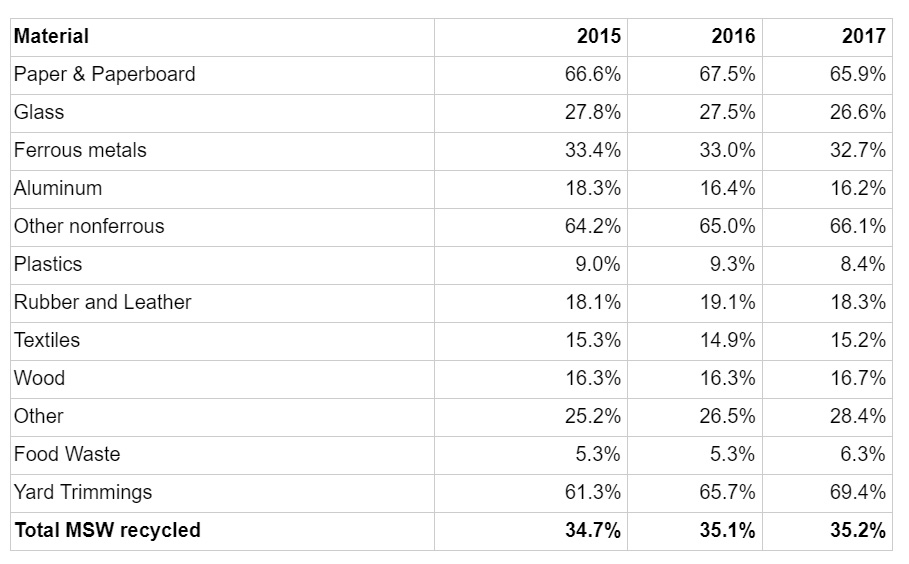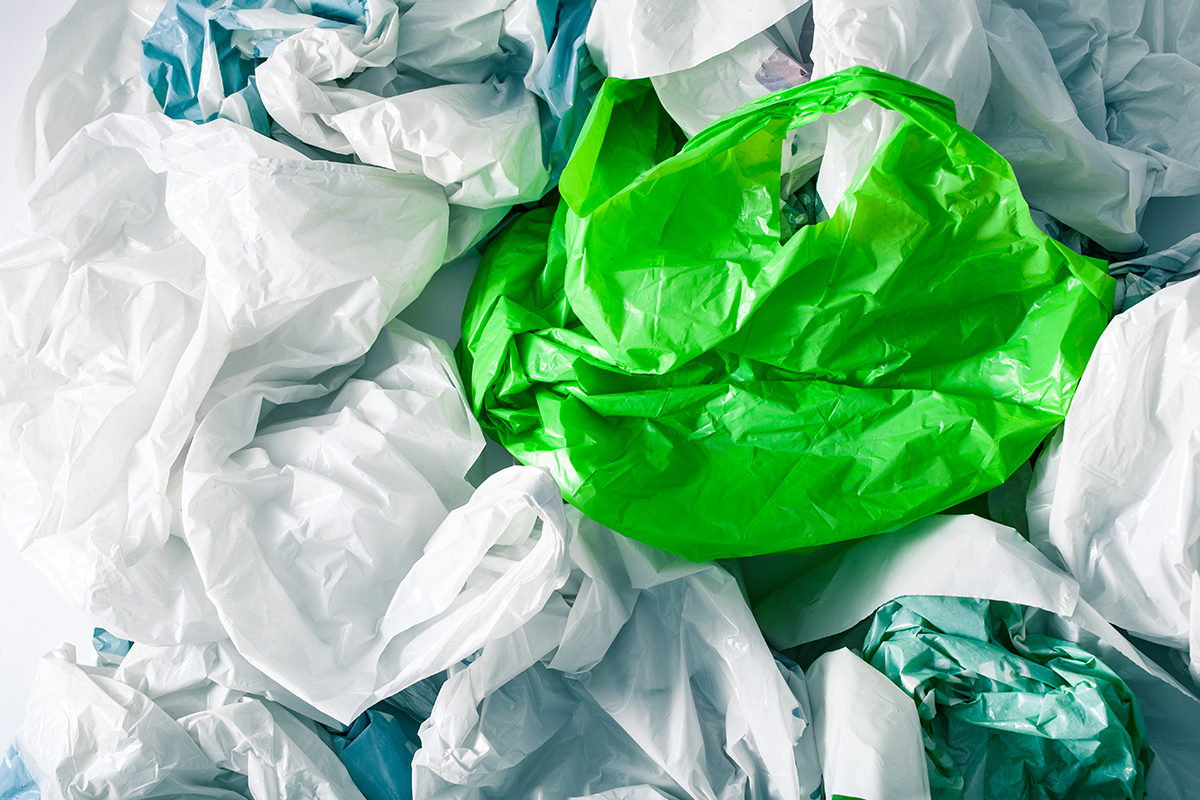The national recycling and composting rate has inched above 35%, according to the U.S. EPA.
The agency this month released national waste generation and recycling data for the years 2016 and 2017. The prior data release, which occurred a year and a half ago, covered 2015.
The nation’s municipal solid waste (MSW) recycling and composting rate increased from 34.7% in 2015 to 35.2% in 2017, according to EPA data. The rate hasn’t shown much movement for a long time: It has remained around 34% or 35% since 2010.
For a number of materials – including paper and paperboard, glass, ferrous metals, aluminum, plastics, and textiles – the recycling rates decreased between 2015 and 2017. Increases were seen with other non-ferrous metals, rubber and leather, wood, other materials, food waste and yard trimmings.
The following figures cover specific materials, according to the EPA (the materials cut across durable and nondurable product categories):
 Total weight recycled increased from 91.0 million tons in 2015 to 94.2 million tons in 2017, up 3.5%. Weight burned for energy recovery increased from 33.6 million tons in 2015 to 34.0 million tons in 2017, up 1.4%. Weight landfilled increased from 137.6 million tons in 2015 to 139.6 million tons, up 1.4%. The statistics indicated the U.S. saw an uptick in overall MSW generation. In 2017, the country generated 267.8 million short tons of material, up 2.2% over 2015. Per capita generation increased from 4.48 pounds per day in 2015 to 4.51 pounds per day.
Total weight recycled increased from 91.0 million tons in 2015 to 94.2 million tons in 2017, up 3.5%. Weight burned for energy recovery increased from 33.6 million tons in 2015 to 34.0 million tons in 2017, up 1.4%. Weight landfilled increased from 137.6 million tons in 2015 to 139.6 million tons, up 1.4%. The statistics indicated the U.S. saw an uptick in overall MSW generation. In 2017, the country generated 267.8 million short tons of material, up 2.2% over 2015. Per capita generation increased from 4.48 pounds per day in 2015 to 4.51 pounds per day.
EPA released the data on conjunction with America Recycles Day, which was Nov. 15. The administration also released a National Framework for Advancing the U.S. Recycling System document.


























